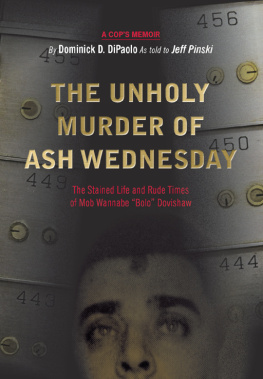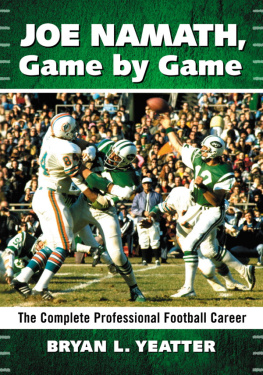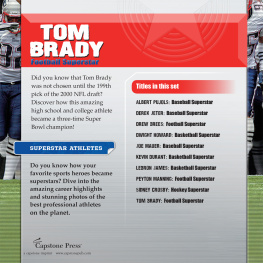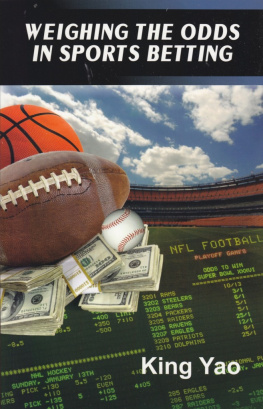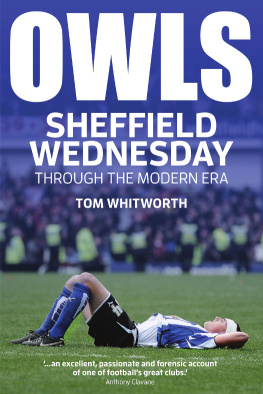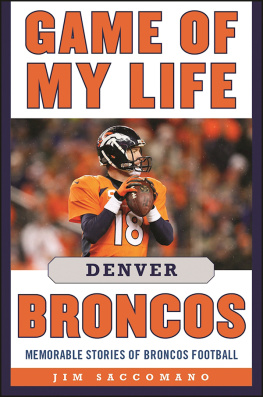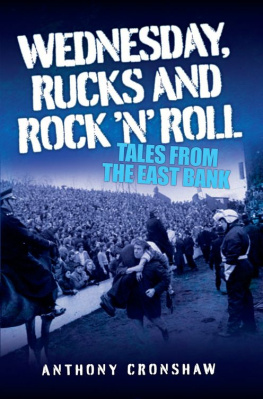A COP S MEMOIR
T HE U NHOLY
M URDER OF A SH
W EDNESDAY
T HE S TAINED L IFE & R UDE T IMES OF
M OB W ANNABE B OLO D OVISHAW
B Y
D OMINICK D. D I P AOLO
A S TOLD TO J EFF P INSKI
Published by Global Roman Publishing
Division of D&P Erie, LLC
Erie, Pennsylvania
www.mmweriepa.com
Mobsters, Murderers and Wannabes, Erie, Pa.
Copyright 2014, Dominick D. DiPaolo and Jeff Pinski
ISBN: 978-0-9960535-0-1
Library of Congress Control Number: 2014936914
All rights reserved. No part of this book may be reproduced or transmitted in any form or by any means, electronic or mechanical, including photocopying, recording, or by any information storage and retrieval system without written permission from the authors, except for the inclusion of brief quotations in a review.
Printed in the United States of America.
C ONTENTS
D EDICATION
To my family:
T HIS WORK COULD NOT HAVE EXISTED WITHOUT THE CONTINUED support, patience and love of my wife Janet and our children Patrick J. DiPaolo and Dawn DiPaolo Romeo. They have been there for me through my many years of police investigations, through all of lifes joys or tribulations, and will forever continue to be my source of great pride and strength.
With much love,
Dominick
Dedicated in loving memory of our beloved son, Patrick John DiPaolo.
1969-2013
Our Hero
Thank you for being our son
WIEITOT
A CKNOWLEDGMENTS
C HRONICLING THE COMPLEX DETAILS OF THE F RANK B OLO D OVISHAW murder and related offshoot crimes could not have been possible without help along the way. The authors gratefully acknowledge the assistance they received from many sources, public and private, and express their sincere thanks to the following:
Larry Kisko, for his resource assistance; Rose Alo and Jean Farkas, for their superior typing skills; Eileen Romeo and the late investigative journalist Carol Pella for their proofreading, critiques and productive input; authors Don Lewis, Esq., a former federal prosecutor, and Rick Porrello, an Ohio police chief, for their wise counsel; Rick Klein of Van Tuil Photo and Imaging for his photographic reproduction expertise; Laurie Rogan, for her investigative skills and court documents; Chris Sigmund, for his talented graphic map creations; and Daria Reymore, for her enthusiastic copying and production efforts.
Also, the authors thank Jamie Mead, Esq., for permission to use a photograph published by the Times Publishing Company; Janet Colao DiPaolo and Dawn DiPaolo Romeo, for their tireless editorial assistance; Erie Police Chief Randy Bowers, for police photos; Erie Police Captain Frank Kwitowski, Lieutenant Chris Crawford, and Detective Sergeants Ken Kensill and Jay White, for their assistance with issues under their jurisdiction; Kim Hersch, of First Niagara Bank for photographic assistance; Tony Ciecierski, for his technical expertise and advice in creating our web site; and Doris Stawniak Pinski, for her lifelong patience.
Also, our thanks to the Pennsylvania Department of Corrections, Pennsylvania Department of Probation and Parole, Erie County Adult Probation Director Jeff Shaw, Kim Kwitowski, of the Erie County Clerk of Courts office, Erie Bureau of Police, and Michigan State Parole Board for information each agency provided.
The authors also acknowledge that their collective work could not have reached publication-ready stage without the insightful and critical edits of retired Erie School District Teacher and national writing coach Mary Jane Koenig.
Dom DiPaolo
Jeff Pinski
S OURCING , METHODOLOGY & OPINION VS . FACT
F ACTUAL INFORMATION CONTAINED HEREIN WAS CULLED FROM POLICE records, court documents and transcripts, statements of victims, witnesses and defendants, notes, newspaper clippings and other sources of public and private information. Public sources are identified. At times material was obtained from Dominick D. DiPaolos memory.
Opinion and private thoughts have been clearly identified as those of the authors, or are obvious to the reader. On rare occasions where no written or oral record, or gaps in the storyline exist, dramatic license is taken and reasonable supposition employed.
As always, every person charged with or suspected of a crime is considered not guilty until proven otherwise through court conviction or guilty plea. Also, rare instances involving individuals not identified in photographs do not connote negativity about those individuals; none is intended.
A UTHORS NOTE : P OST -W ORLD W AR II E RIE , P ENNSYLVANIA
E RIE , P ENNSYLVANIA , WAS NO DIFFERENT THAN ANY OTHER CITY OR town in sending its sons and daughters to far-flung duty stations, ships and battlefields during World War II.
When Eries warriors returned, the same post-war culture of prosperity that swept the nation took hold. In many cases this new middle-class economy grew because the GI bill created millions of first generation college graduates who moved into jobs that were not only family-sustaining, but also created discretionary income. In other cases, veterans prospered because the war had cut short the Great Depression. Those who did not avail themselves of higher education returned to their family retail businesses, farms, or factories that now converted back to peace-time manufacturing. Every family needed at least one car, a washing machine and dryer, refrigerator, television set, high fidelity phonograph, and myriad other big ticket products. The nation flourished, and Erie along with it.
It was an amazing time of growth in northwestern Pennsylvania for the next generation. Jobs were plentiful on the industrial front in industries such as General Electric, Hammermill Paper, Zurn Industries, Lord, American Sterilizer, Kaiser, Bucyrus Erie, Marx Toys, Continental Rubber, just to name a few, and literally hundreds of smaller shops that dotted Eries east and west sides, the bayfront and the 12th Street Industrial Corridor. The dairy and agri-business thrived, as did commercial fishing in a city situated on the shores of Lake Erie, halfway between Cleveland, Ohio, and Buffalo, New York. In those pre-shopping mall days, retail jobs were available in many family-owned businesses that lined State Street, heart of the citys Central Business District, a wide corridor with pedestrian aisles, which ran south from the Public Dock, and separated east Erie from west Erie.
Erie remained a town of about 130,000, occupied by various cultural ethnicities that reflected the successive waves of immigration from the mid-19th century to the mid-20th. Two of the largest groups Italians and Poles were often divided according to eastside Polish and westside Italian, although intermarriages were frequent. Catholicism was the predominant and common faith of each group and both thrived in the professions, in education, law enforcement and in politics. Most individuals were hard-working, second generation Americans who raised families, paid taxes, obeyed the laws of the land, and led otherwise productive lives.
Yet, Erie was no different than other similar-sized or larger cities in growing its own ugly subculture of crime. Some of these overt blemishes were connected to nearby family controlled mob venues of Buffalo, Cleveland, Youngstown and Pittsburgh, while another dimension was more loosely organized among home-grown societal misfits. Such criminal activity often focused on obtaining an easy buck through burglaries, robberies, illegal drugs and even occasional killings. But gambling illegal gambling in this time before state-sanctioned daily numbers games and the burgeoning casino business was king. From the professions to retail stores to schools to shops to even grandmothers with their pennies, nickels, dimes and quarters, thousands of dollars were bet each day on the illegal daily number, usually appearing in code on the newspapers financial pages, where one and all could see and there could be no misleading bettors. Sports betting was also a huge component of Eries illegal gambling empire. One who took the risk to facilitate such unlawful gambling was called a bookmaker, a person who makes book on the betting, or in slang, a bookie. Bookies made their huge profits usually not by betting themselves (although some did), but by charging a commission, or fee, on clients bets. The commission was known as vigorish or vig. When an occasional bet involved too much money for the local bookie to comfortably handle, it would be laid off to a larger illegal gambling operation in a bigger market, such as Pittsburgh or Buffalo. This was the gambling network that existed in Erie and elsewhere following World War II. And what a lucrative business it was! Even after Pennsylvania established the legal daily number in the 1970s, the illegal gambling industry found a way to stay in business by increasing clients profits on successful bets, with payouts greater than those offered by the state.
Next page
